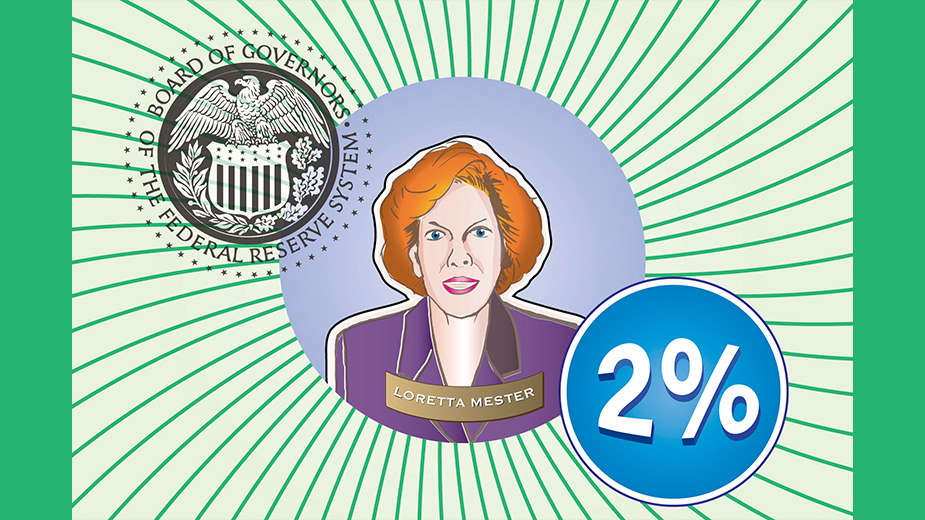‘How Could It Be Worse?’ Mahoning Valley Economy Set to Improve in 2021
YOUNGSTOWN, Ohio – A.J. Sumell is hesitant to make specific predictions about the local economy after last year, when he predicted the regional economy would be better than in 2019, following the closure of General Motors’ Lordstown complex.
Instead, 2020 turned out to be “the worst year economically in the history of our valley,” as the Youngstown State University economics professor puts it.
“I may be a little more reluctant to offer specific projections for this year, but I am confident that this year will be much better than last year,” he says, because how could it be worse, right?”
Sumell was among a group of economists and financial experts who shared their insights and predictions about the local economy. Also providing their input were Bill Adams, senior vice president and senior economist with PNC Bank; Bill Shivers, Canton/Mahoning Valley Region president for Huntington National Bank; and Gary Small, president of Premier Bank.
Unsurprisingly, all identify the coronavirus pandemic as the driving factor of the 2020 economy and say it will be a major element of this year’s economy as well.
“Overall, there was a double-digit decline in private-sector employment, which the Mahoning Valley has not experienced since statistics have been tracked in the past 40 years,” Sumell says. “Even during the height of the Great Recession, the decline in private sector employment did not reach 10%.”
“The story of this year is we saw a huge shock to the U.S. economy and then we saw a historically rapid rebound,” PNC’s Adams adds. “We saw our fastest rebound from our deepest downturn.”
Parts of the economy that more easily transitioned to remote work and digital commerce improved more quickly than ones more reliant on face-to-face interaction, such as tourism, hospitality and brick-and-mortar retail.
He acknowledged the Youngstown metropolitan region’s recovery has lagged, in part following the area’s historical pattern of trailing the rest of the country during economic recoveries, but also because of factors more specific to the pandemic. The area was helped by not being a “big tourist center,” that lost out when people stopped traveling. At the same time, there are more blue-collar jobs that were affected by the pandemic and fewer knowledge-industry jobs that could adapt easily.
Huntington’s Shivers agrees that the economy of the Mahoning and Shenango valleys weathered 2020 well, “considering everything that we went through with COVID.” Though industries such as hospitality and food service faced challenges, Huntington’s customers reported they managed OK, though he admits “more than a couple” were shut down for several weeks.
“People were able to pivot very well and switch their focus in order to keep themselves relevant and competitive,” he says. “Anybody that was in the supply chain or maybe producing food for the grocery stores, they did very well. Most of the manufacturers – whether it was in aluminum, whether it was in fabricating, whether it was in metal stamping – they also did very well considering the challenges.”
The unique factor in the current downturn is that the hardest-hit sectors are ones that typically do better during recessions, such as education and health care. Employment in education and health services declined 15% overall, according to Sumell.
“You might think that during a global health epidemic that there might be an increase in demand for health care and even an increase in health care employment,” he says, but the increase in demand was largely emergency-based to treat coronavirus patients and nonessential care declined substantially.
Construction and mining saw the greatest decrease in overall employment, 25%, he reports. Professional and business services experienced a 15% decrease in employment, while manufacturing fell 10%. Government employment declined by 7%, “which is much larger than typical during a recession,” he adds.
Sectors that didn’t experience as great of a decline as others were information technology, manufacturing, and trade and transport, the largest sector by total employment in the Mahoning Valley, he says.
From Premier Bank’s perspective, the region came through 2020 strong at both the household and business levels. That’s not a prediction Small says he would have made back in March, at the beginning of the pandemic.
“Most every industry is having a reasonable to better-than-reasonable year,” Small says. “Their liquidity, their cash on hand and so forth is very high and they’re in a strong position to go forward. That’s true for the Valley and I think that’s true for the metro, Ohio and U.S. market.”
Individual household savings accounts have more money than Small says he has ever seen, and delinquencies are at an all-time low because of how people are managing their finances.
“Obviously it hasn’t been the same experience for every household and that’s true around the country, but the majority of the households weathered the year just fine,” Small says. People made the proper adjustments, while the federal government took strong steps early on to assist businesses and individuals, keeping the problem from being bigger than it could have been.
Housing, in terms of residential prices and sales, has done well during the pandemic. “People have seen an increase in the desire to live in their own house and often those houses are in the suburbs so people are more willing to move from the inner cities and apartments where they’re more naturally clustered together,” YSU’s Sumell says.
The housing industry has been “one of the big outperformers in this recovery so far,” Adams says. The Federal Reserve held interest rates to record lows, providing homeowners that refinanced their mortgages with more money they could then put back into the economy to purchase goods. Meanwhile, middle- and upper-income households were aided by stimulus payments, helping them come through the downturn in much better shape.
Such households are more likely to be homebuyers, fueling housing demand and homebuilding, particularly in less densely populated areas, which has helped across Ohio, he continues. The latest data available for the Youngstown-Warren-Boardman area shows housing prices for the second and third quarters of 2020 rose.
“That’s encouraging news for the area economy,” he says. “That means more household wealth and that translates into spending across the economy.”
The residential mortgage market was at an “all-time high” because of a mix of refinancing, purchases of existing homes and new construction, Small says. He expects continued activity this year because of interest rates and higher demand than supply on the housing side.
This year, the arrival of more stimulus payments will support the incomes of thousands of households in the Valley that have lost jobs during the pandemic, which will boost local economic demand and spending, PNC’s Adams says. At the same time, brick-and mortar retail, restaurants and other hospitality businesses “are really going to struggle” until vaccine distribution is widespread enough to bring the pandemic under control.
“It’s really difficult to know exactly when that will be, but it looks like it’s going to be a difficult economy for those sectors at least through midyear,” he says.
Stimulus programs such as the Paycheck Protection Program will be a positive, Premier’s Small says. The amount assigned so far for the new round of PPP funding is “a little bit less than last year,” which means there will be greater focus on assisting small businesses.
“That’ll be a plus and it’ll continue to provide momentum and catalyst for ’21 for business as we return to a normal state,” he says.
Because the economic hit was the result of the pandemic and not structural reasons within the financial system, Sumell expects to see a “pretty significant rebound in terms of overall employment” once “things come back to normal and people feel comfortable going out again.”
Employment in the Youngstown metro area remains down about 10% relative to where it was at the beginning of 2020, which is worse than the national employment rate, which is down about 6%, Adams says. Additional stimulus will prevent that unemployment from becoming a “broader drag” on the economic recovery, he says.
While stimulus such as the payments to individual taxpayers are well intended, Small prefers more “focused” efforts, such as those targeted to the unemployed or lower-income households where the need is highest.
“Those dollars don’t sit in checking accounts and savings accounts. They get spent because the need is there,” Small says. “You’re helping those that are most in need. From an economic standpoint, you’re getting more bang out of your buck out of that dollar because it does better to spend that money on all the things that households spend it on and have that circulating through the system.”
Ultimately programs will need to be paid for, but Small doesn’t anticipate any action being taken on taxes – corporate or individual – until 2022. “Most households will either favorably benefit or those that might feel a little bit of a hit are probably going to be the households that are going to be in a position so they can weather that,” he says.
In the short term, the health of the local economy depends on establishing “whatever that new normal is” to permit people to go out comfortably and overall employment should increase significantly over the year, Sumell says.
In the long term, the local economy will benefit as major development projects such as Lordstown Motors Corp., Ultium Cells and the TJX Companies’ HomeGoods distribution center ramp up, each promising potentially 1,000 or more jobs.
“I’m generally an optimist and a hopeful. There are a lot of good things coming for this Valley economically, both in 2021 and long term in the future,” Sumell says.
Overall economic activity by the end of 2021 is going to recover to where it was prior to the downturn in fourth quarter 2019, Adams predicts, but the course of that recovery remains dependent on the course of the pandemic and the vaccine rollout.
“We’re going to have a very different distribution of economic activity by the end of this year because we’ve seen the rapid penetration of e-commerce and the digital economy. We’ve seen it replace a lot of the more traditional businesses over the course of the pandemic,” he says.
“There will be some carryover effect from 2020 that will continue to be a very strong driver in ’21,” Premier’s Small says. Interest rates will remain low, providing opportunities for businesses that might need money to invest and expand, as well as for households. Because of those low rates, people also should consider more options than they have in the past to ensure they have “the right balance of investments,” he says.
“What we’re hearing from our customer base is they’re anticipating the year is going to be OK. They feel if they made it through 2020 he way they did that 2021 is going to get better,” Huntington’s Shivers says. He acknowledges how the year goes will be dictated to a large degree by the pace of vaccinations, but, like Small, he sees pent-up demand. Any restaurants or hospitality-related businesses that survived the pandemic will have the opportunity to do well once vaccination programs improve, he says.
“I’m hopeful that by June [the pandemic is] going to be behind us,” he says. “If that happens, then I think the second half of the year should be a pretty good year.”
Beyond that, the Huntington official anticipates benefits from the Royal Dutch Shell ethane cracker being developed in western Pennsylvania, as well as the multiple Lordstown projects, and cites General Motors CEO Mary Barra’s comments regarding the company’s movement toward battery-powered vehicles.
“The fact that we have that technology being developed in our backyard [is] going to play out well for us,” he says. “Collectively, all of these things happening are going to have a very, very positive impact on our region and on the economy.”
Many businesses had “a fine year” in 2020 and will continue to this year, Small says. He sees the prophesied “death of brick-and-mortar” retail as premature, though he acknowledges there will be some outlets, both small and large, that don’t survive and others that will be reincarnated in some manner.
“Generally speaking I think there will be a balance between online and brick-and-mortar sales,” he says. Consumers represent 70% of the economy and “are sitting on a pile of cash” with a year’s worth of pent-up demand.
Sumell also expects the administration of President Joe Biden and Democratic control of Congress will be positive for the Valley.
“That’s largely because Democrats have historically been more willing to open the federal wallet when it comes to spending on things like infrastructure and supporting local governments,” he says. The Valley is also positioned to benefit from potential federal investment in green energy because of the emerging local industry.
“A lot of the policies haven’t been determined but it seems that people are excited and want to find out what is going to happen with the administration,” Huntington’s Shivers says.
Copyright 2024 The Business Journal, Youngstown, Ohio.



